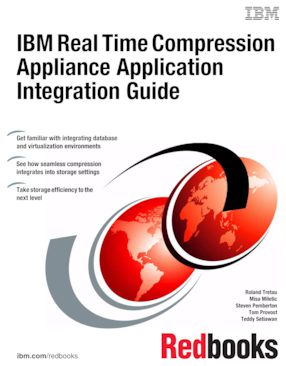
Published on 18 July 2012
Read in Google Books Order hardcopy
Share this page:
ISBN-10: 0738436798
ISBN-13: 9780738436791
IBM Form #: SG24-8029-00
Authors: Roland Tretau, Misa Miletic, Steven Pemberton, Tom Provost and Teddy Setiawan
Abstract
Continuing its commitment to developing and delivering industry-leading storage technologies, IBM® is introducing the IBM Real-time Compression Appliances for NAS, an innovative new storage offering that delivers essential storage efficiency technologies, combined with exceptional ease of use and performance.
In an era when the amount of information, particularly in unstructured files, is exploding, but budgets for storing that information are stagnant, IBM Real-time Compression technology offers a powerful tool for better information management, protection, and access. IBM Real-time Compression can help slow the growth of storage acquisition, reducing storage costs while simplifying both operations and management. It also enables organizations to keep more data available for use rather than storing it offsite or on harder-to-access tape, so they can support improved analytics and decision making.
IBM Real-time Compression Appliances provide online storage optimization through real-time data compression, delivering dramatic cost reduction without performance degradation.
This IBM Redbooks® publication is an easy-to-follow guide that describes how to design solutions successfully using IBM Real-time Compression Appliances (IBM RTCAs). It explains best practices for RTCA solution design, application integration, and practical RTCA use cases. This is a companion book to Introduction to IBM Real-time Compression Appliances, SG24-7953.
Table of Contents
Part 1. Solution design
Chapter 1. NAS / N series solution design
Chapter 2. EMC storage integration
Chapter 3. Nearline and offline backup solutions
Chapter 4. VMware vSphere integration
Chapter 5. Oracle database application integration
Chapter 6. File serving solutions
Part 2. Application integration use cases
Chapter 7. VMware vSphere use cases
Chapter 8. Oracle use cases
Chapter 9. File serving use cases